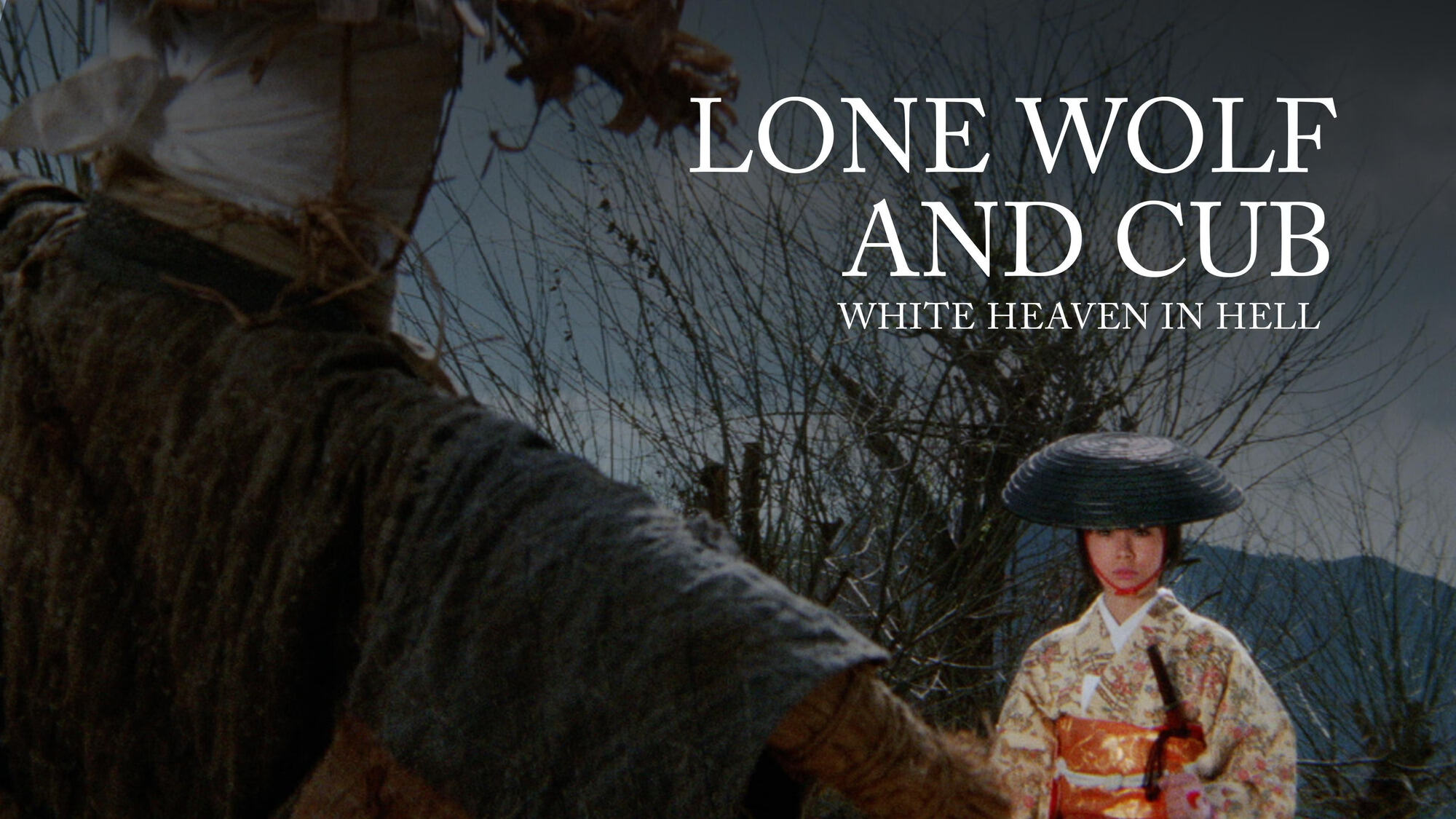
The movie Lone Wolf and Cub: White Heaven in Hell is a classic martial arts film that has captivated audiences for decades. Released in 1974, it serves as the sixth and final installment in the highly popular Lone Wolf and Cub series. Directed by Yoshiyuki Kuroda, the film follows the thrilling journey of Ogami Itt?, a powerful and feared assassin, and his young son, Daigoro.
As the title suggests, Lone Wolf and Cub: White Heaven in Hell takes our protagonists to new heights of adventure and danger. Packed with intense action sequences, breathtaking scenery, and emotionally charged performances, this movie is a standout in the genre. In this article, we will explore 32 fascinating facts about Lone Wolf and Cub: White Heaven in Hell, shedding light on its production, the cast, the impact it had on cinema, and much more.
Key Takeaways:
- Lone Wolf and Cub: White Heaven in Hell is a legendary samurai movie with epic sword fights, captivating storytelling, and a powerful father-son relationship that has left a lasting impact on cinema.
- This final installment of the Lone Wolf and Cub series has achieved cult classic status, influencing filmmakers worldwide and captivating audiences with its timeless appeal and emotional narrative.
Cult Classic Status
The movie Lone Wolf and Cub: White Heaven in Hell has achieved cult classic status among fans of Japanese cinema.
Final Installment
Lone Wolf and Cub: White Heaven in Hell is the sixth and final installment of the iconic Lone Wolf and Cub film series.
Directed by Yoshiyuki Kuroda
The movie was directed by Yoshiyuki Kuroda, who also directed the previous films in the series.
Released in 1974
Lone Wolf and Cub: White Heaven in Hell was released in 1974, captivating audiences with its thrilling action sequences.
Based on the Manga
The movie is based on the popular manga series of the same name, created by writer Kazuo Koike and artist Goseki Kojima.
Epic Samurai Showdowns
The film features epic samurai showdowns, showcasing the exceptional skills of the titular lone wolf and his young cub.
Spectacular Snowy Setting
Lone Wolf and Cub: White Heaven in Hell takes place in a breathtaking snowy landscape, adding a unique visual element to the story.
Themes of Revenge and Redemption
The movie explores themes of revenge and redemption, as the lone wolf seeks vengeance while also protecting his son.
Acclaimed Cinematography
The film boasts impressive cinematography, capturing the intensity and beauty of the samurai battles.
Powerful Performances
The cast delivers powerful performances, bringing the complex characters of the lone wolf and cub to life on the screen.
Memorable Soundtrack
The movie features a memorable soundtrack composed by Hideaki Ashimoto, enhancing the overall mood and intensity of the film.
International Recognition
Lone Wolf and Cub: White Heaven in Hell gained international recognition, expanding the fanbase well beyond Japan.
Action-Packed Plot
The film is filled with thrilling action sequences, keeping audiences on the edge of their seats throughout the movie.
Symbolism and Allegory
Lone Wolf and Cub: White Heaven in Hell incorporates symbolism and allegory, adding depth to the narrative.
Influential to Future Filmmakers
The Lone Wolf and Cub film series, including White Heaven in Hell, has had a significant influence on future filmmakers, inspiring them to create their own masterpieces.
Stunning Set Design
The movie showcases stunning set designs, recreating the Edo period with attention to detail.
Legacy of Lone Wolf and Cub
The Lone Wolf and Cub film series, including White Heaven in Hell, has left a lasting legacy in the world of cinema, influencing subsequent samurai and action films.
Complex Father-Son Relationship
The film delves into the complex relationship between the lone wolf and his son, exploring themes of love, loyalty, and sacrifice.
Intense Sword Fights
Lone Wolf and Cub: White Heaven in Hell features intense and choreographed sword fights that have become iconic in Japanese cinema.
Historical Accuracy
The movie strives for historical accuracy, portraying the customs, traditions, and societal norms of the Edo period.
International Box Office Success
Lone Wolf and Cub: White Heaven in Hell achieved international box office success, solidifying its position as a beloved film.
Critical Acclaim
The movie received critical acclaim for its storytelling, visual style, and exceptional performances.
Multi-Generational Appeal
Lone Wolf and Cub: White Heaven in Hell has a multi-generational appeal, captivating audiences of all ages.
Martial Arts Mastery
The film showcases the mastery of martial arts by the lone wolf, making the action sequences even more compelling.
Cultural Significance
The Lone Wolf and Cub series holds significant cultural importance in Japan, symbolizing the samurai spirit and honor.
Iconic Costumes
The movie features iconic and meticulously designed costumes that add an authentic touch to the characters.
Emotional Narrative
Lone Wolf and Cub: White Heaven in Hell takes viewers on an emotional journey, filled with highs and lows.
Comic Book Adaptation
The Lone Wolf and Cub series originated as a comic book before being adapted into a successful film franchise.
Dedicated Fanbase
The Lone Wolf and Cub: White Heaven in Hell has a dedicated fanbase that continues to celebrate the film long after its release.
Influence on Western Cinema
The Lone Wolf and Cub film series has had a significant influence on Western cinema, with filmmakers drawing inspiration from its storytelling and visuals.
Engaging Narrative
Lone Wolf and Cub: White Heaven in Hell presents an engaging narrative that keeps viewers hooked from beginning to end.
Timeless Classic
Lone Wolf and Cub: White Heaven in Hell is considered a timeless classic, still captivating audiences with its powerful storytelling decades after its release.
Conclusion
In conclusion, Lone Wolf and Cub: White Heaven in Hell is a captivating movie that showcases the thrilling journey of a father and son in feudal Japan. With its masterfully choreographed fight scenes, stunning cinematography, and a gripping storyline, it has become a cult classic among movie enthusiasts. The movie’s unique blend of action, drama, and tragedy leaves a lasting impact on its viewers. Whether you’re a fan of samurai films or simply appreciate well-crafted storytelling, Lone Wolf and Cub: White Heaven in Hell is definitely a must-watch.
FAQs
1. What is the plot of Lone Wolf and Cub: White Heaven in Hell?
Lone Wolf and Cub: White Heaven in Hell follows Ogami Itto, a skilled samurai assassin, and his young son Daigoro as they navigate through a treacherous snowy landscape. They encounter various enemies, including rival samurai clans, as they try to survive and seek vengeance.
2. Is Lone Wolf and Cub: White Heaven in Hell based on a manga?
Yes, Lone Wolf and Cub: White Heaven in Hell is based on the manga series created by Kazuo Koike and Goseki Kojima. The series was highly influential and popular in Japan during its publication in the 1970s.
3. Are there other movies in the Lone Wolf and Cub series?
Yes, Lone Wolf and Cub: White Heaven in Hell is the final installment in a series of six films based on the manga. The series began with Lone Wolf and Cub: Sword of Vengeance, followed by Lone Wolf and Cub: Baby Cart at the River Styx, Lone Wolf and Cub: Baby Cart to Hades, Lone Wolf and Cub: Baby Cart in Peril, and Lone Wolf and Cub: Baby Cart in the Land of Demons.
4. Are the Lone Wolf and Cub movies connected, or can they be watched individually?
While each movie in the Lone Wolf and Cub series tells a standalone story, they are interconnected and follow a continuous narrative. It is recommended to watch the films in order to fully appreciate the character development and ongoing storylines.
5. Are the Lone Wolf and Cub movies suitable for all audiences?
No, the Lone Wolf and Cub movies are known for their graphic violence and intense action scenes. They are rated R for strong bloody violence and some sexual content. Viewer discretion is advised.
Was this page helpful?
Our commitment to delivering trustworthy and engaging content is at the heart of what we do. Each fact on our site is contributed by real users like you, bringing a wealth of diverse insights and information. To ensure the highest standards of accuracy and reliability, our dedicated editors meticulously review each submission. This process guarantees that the facts we share are not only fascinating but also credible. Trust in our commitment to quality and authenticity as you explore and learn with us.


